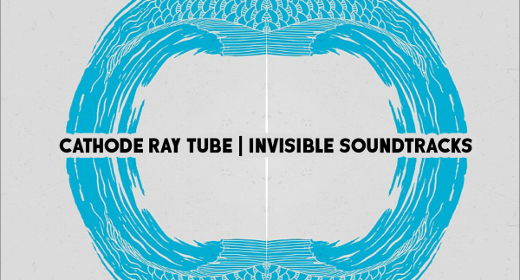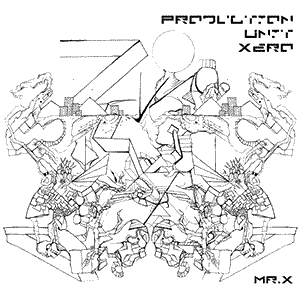Charles Terhune (aka Cathode Ray Tube) provides Igloo Magazine a full explanation for Invisible Soundtracks available on M-Tronic.
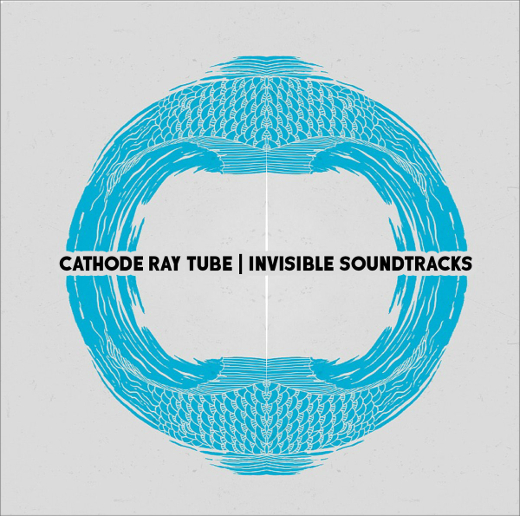
I’ll start off this lengthy exploration/explanation of my latest album, Invisible Soundtracks (M-Tronic), with an old Chinese fable.
A nobleman approached an artist in ancient China, famous for his bird paintings. Once the nobleman found the artist, the spoke for a time and the artist agreed to do a commissioned portrait of a swallow for the nobleman.
“It will cost you fifty pieces of gold,” said the artist
“Money is no object,” said the nobleman, eager to impress the artist with his wealth and taste. “For works of yours, especially.”
“Come back in one year’s time,” said the artist. The nobleman was puzzled but, eager to own one of the artist’s exquisite works, agreed. In one year’s time he returned and asked for his artwork. The artist brought out a sheet of his finest parchment, dipped his best brush in a pot of his own specially mixed ink and drew a perfect portrait of a swallow in less a minute. The nobleman looked at it then at the artist in anger and surprise.
“You made me wait a year for that?” said the nobleman. “You charged me fifty gold pieces for something you completed in seconds?”
The artist, saying nothing, rose from his seat and went to a nearby closet. He flung the door open and out poured a cascade of papers upon which each one bore a portrait of a swallow.
This isn’t a way of saying that I’m a famous artist who should be paid handsomely for his work (though I do believe that to be true). I only mention it to preface the following statement: Invisible Soundtracks, though it may be my best work to date, took me the shortest time to make of all my albums. And the idea that great art needs to take a long time to be created or produced is utter baloney-hooey.
I’ve been making music since 1983 when I inherited a Yamaha CE-25 from my grandfather. Since then I’ve gone through a lot of gear, many configurations of studios in many places, and written several hundred hours of music—and not all of it is good. Some of it is so downright bad I’m occasionally inclined when feeling my most paranoid to hunt down those who might have it and steal back the cassette, CD or digital file they may have of said excremental tracks.
But when I make a track I like I can say it’s good. And if others like it it’s even better. Because after 35 years of making music I’ve gotten to know very well what works for me and what doesn’t in a track. I’ve experimented, changed up and trashed more ideas, techniques and tricks than others you whippersnappers have had hot meals. So at this point in time I know what works for me and what doesn’t. In the purest sense of the word it’s not arrogance from which I speak when I confidently call myself a master.
Check it:
To really become an expert or master requires the infamous 10,000 hours, or even 20,000 hours—perhaps the difference between being a chess master and a grandmaster. To apply yourself to a field or to a problem for that long a time means there will inevitably be moments of boredom and tedium. Practice, particularly in the beginning, is never exciting. To persist past these moments you have to feel love for the field, you have to feel passionately excited by the prospect of discovering or inventing something new. Otherwise, you will give up. In my chapter on creativity I discuss what I call the primary law of the creative dynamic: “Your emotional commitment to what you are doing will be translated directly into your work. ~Robert Greene
Okay, so what does this have to do with this goddamn Invisible Soundtracks album, sonny boy?
Like I said I’ve gotten really good at making music, and my kind of music especially. I’m the primary listener since I listen to my own music not in a masturbatory way but because it helps me focus as I know what it’s going to do and how it does it, etc. I find this especially helpful on long car trips (mostly because I like to criticize my own work endlessly and harshly) where I’m the main audience. I know what I like and don’t and what I want to hear. I also know I get bored very easily, need to change stuff up and try new things or get stuck in a pattern and get very depressed in said rut.
Rarely do I sit down to make an entire album with a concept or idea in mind. My album Exodus Partners (Component) was a concept album where I had the art and titles done long before the songs were ever recorded. Living In The Perfect City Of Thy God (T-Scume/Condition Human) was a concept album crafter as I wrote the tracks around a central storyline. And my forthcoming Intona Remorae EP due out in December on Viral Conspiracy is a concept album, too, I reckon. Okay maybe I make more concepts up that I thought I do!
Most of the time I just want to make some music. And often what comes out gets consigned to the sketch bin or filed away for later use. Many songs on my last few albums were in fact written five or in some cases ten years ago. These are often old sketches that I re-opened and found something useful within them.
When I sit down to make music I may do so with an idea for a sound or a feeling or concept (though often it’s just to funk around and see what happens). Rarely does that ever make it all the way to a finished version of the song that you, the listener, gets to hear. Often that initial kernel of inspiration has been discarded, reworked or so calcified over with subsequent ideas that whatever idea I started out with is long, long gone. Though the time between initial idea and completed track may be a few days or even weeks rarely does it look like I first intended.
With the tracks that comprise Invisible Soundtracks I had a couple things in mind. Sometimes I do this thing where I set up a certain set of rules and do my best to adhere to them. For one I wanted to explore melodies more than I had with music I’ve made over the last four or five years. I also wanted to work atmospheric and ambient elements into tracks in a more overt way, so that they were no longer ambient wallpaper but an integral part of the track. Another element I wanted to introduce was more dissonance, less playing to the root note of the key (while I can’t read music I know the basics of theory this idea of not playing the key came from something Miles Davis once said to the bandleader Paul Shaffer on the set of Scrooged). And yet another element I wanted to introduce was random events and a greater degree of chance happenings occurring in songs.
Now what’s really interesting is that I’d been thinking of these ideas for a while but they only just appeared recently in my music. Like I they were in my unconscious mind for the better part of two years before surfacing in the music. This may not surprise you but it intrigues me immensely. I find it fascinating as, like I said, I don’t think I ever set out to write a specific piece about something in a certain tone or vibe. And yet these tracks happened to all have very prominent elements of what I was interested in adding to my musical palette or template.
So this leads to the actual composition and recording of Invisible Soundtracks’ songs. Which as I said happened primarily between January and June of 2018. Maybe even April or May. Our family moved in August of 2017 to a house where I have my own basement studio space. Here in Flow Control 8.0 (Flow Control has been the name of my studio spaces since about 2000 or so) I could be as loud or quiet as I want. I set the studio up so all my devices are close at hand where I need them in exactly the right place. Between that and how I have the template set up in Ableton 9 I’m able to dive right in and catch ideas as they emerge quickly and easily (I once read an article where the great master synthesist and composer Tomita said you need to be ready to record instantly at all times. I guess I took that right to heart).
It wasn’t until January 2018 that I realized I hadn’t recorded any new music in five or six months. So on January 1st I sat down at my desk and started what would eventually become “O Broken World.” Once that was done I started up on what became “Cyonara.” The groove must have been set because then tracks began to pour out of me, as they do (I’ve been accused of being prolific and perhaps too much so. To that I say see above or look to reviews of my music wherein none of them say “Slow down!” do they?).
As I said I compose in Ableton Live exclusively and have done so since 2004 or so—before then I used Logic in the studio and Live on stage. Flow Control 8.0’s hardware elements are being slowly and carefully integrated into the studio so for Invisible Soundtracks I used softsynths entirely, especially the SonicCharge tools like Synplant, Microtonic, Permut8 and Echobode. I also used a lot of Live 9’s own devices, synths, drums and effects.
I wish I could say I took extensive and exhaustive notes for the production of each song but… I didn’t. I just sat down and there they were! Maybe someday I will have an official archivist who will debrief me on each song but right now that position is going to go unfilled.
Some mention has been made of song lengths. In fact the original sequence for Invisible Soundtracks was twelve songs but Laurent and I agreed it needed to be trimmed down a bit as it was well over an hour long. When people complain about song length I realize they’re not really listening or thinking about what they’ve been told is a proper song length. The single format has been set at 3:45 or so ever since that was the maximum amount of audio time you could fit on an album going back to the invention of the 78RPM lacquer platters. And we’ve stuck with that for the most part. Vinyl LP’s clocked in at about twenty minutes a side. With CD’s there came longer album formats for better or worse.
So we’ve been fed the lie that a song is supposed to be good only when it fits in that format. Which is bullshit. Orchestral and choral pieces are long as shit, with a movement being seven minutes or longer! So when a song is over three minutes it’s not necessarily self-indulgent (and I’m the first to admit I’ve written some songs that made it on albums which could’ve been cut in half or by two-thirds). With these songs on Invisible Soundtracks they’ve gone through my usual rigorous betting process which involves three people and two other pairs of very trusted ears. They’re all asked the same things: Does it suck? Does it shine? What sucks? What shines? Does it groove? Is it too long?

And all the songs contained on Invisible Soundtracks made the cut, length and all. Sometimes a track needs to be a minute thirty or so. Sometimes it needs to be three minutes or so. And sometimes, not all the time but sometimes, that sumumumbidge needs to be nine or twelve minutes long because that’s what makes it flow, funk, shine, groove and above all not suck!
So… what I can say is that with all those things included in the production of the album a few things of note have occurred. One is that people seem to love this one more than any other before it. I’m honored that each album has been called “his best work yet” but for this one it’s being said an awful lot more than the others. This constantly humbles and frankly flummoxes me. I’m just a guy sitting in front of a laptop trying to make music I dig, after all.
Now if I were to do a track by track rundown it might go something like this:
“Alpha Omega Transect” :: I wanted something that sounded like a journey of incredible scope and poor odds. Like crossing Africa in a Radio Flyer cart with only a bag of Twizzlers as food. This one got its roots as an Autechre cover (who the frig tries that?) and quickly became a work of its own. I recently told a friend that if pressed I’d say my music is a continuation of Autechre around Chiastic Slide before they seemingly eschewed melody for rhythm and FM digital noodling (which I do not in actuality believe they did).
“O Broken World” :: I really wanted to see how loud and distorted I could make a track yet have all the constituent elements be discernible. This is the result. There’s an Audio Damage Kombinat Tri plugin on every track pretty much. A SynPLant patch does the main bleep bleep bit. The drums that come in midway are the legendary Amen break turned into a MIDI pattern then altered by yours truly. This also contains a secret sample I ain’t telling you shit about, bwah!
“Cyonara” :: I wanted to make something that sounded like a kid jacked on way too much sugar and Aderall. Nailed it! I wanted there to be a lot of weird stuff happening slightly out of my control. And while I set the parameters for a lot of varying elements boy did things get wonderfully out of hand. This also has a lot of the melodic stuff I wanted to include in these tracks. I like how it slows down and fades into a sort of sunset. It’s a bit of a spiritual successor to the track “2064 UD” off my album Exodus Partners. Why? Just listen.
“The Sleep Market” :: This was a track from a group where I was looking for a particular groove. Several made it past sketch form into full tracks and you might hear another somewhere. That long, square-wave flange drone is so dope, I think. It’s the first in what I call the “Be-Bop Quad” of songs on the album, so-called because of the be-bop brushes kit that works so nicely in these tracks. At some point I’ll get to working with a human drummer I know who’s a jazz cat but is also down with rock and experimental stuff. These drums are the closest I’ve gotten to hyper-programming like Squarepusher or Aphex Twin which isn’t usually my bag but with a kit like that you kinda have to. And it works nicely with those tight arpeggios skittering around everywhere, eh?
“Deimos” :: Track two of the Be-Bop Quad. It’s a nice and long, slow burn of a song. Good for a chase scene or a heist (I’m open to doing soundtrack and scoring work, Hollywood!). The ambient throbbing gives in to a nice drum bit and synth pattern. Sounds like giant insects or The Triffids. And then those be-bop drums sketches come to life. I love the way I got the drums to tighten up against those hazy synths and arpeggios. Alot of this is SynPlant synths and Echobode effects.
“Bodhicitta Mytox” :: Be-Bop Quad number three. Dig those Tibetan cats and their crazy scats?! Another be-bop-a-loola! I used some newer metallic textures in here which initially scared the crap out of me until I learned how to use and control them. Also the bell arps work nicely against those synth arps, too, eh? I agree. The way they chug along in a weird, alien samba starting around 9:40 is so nice, I think. It’s got a softer feel that to my ears has some kinship with Orbital’s “The Girl With The Sun In Her Head.” Maybe it’s the drums or the brightness of the track which is not something I’m exactly known for, am I? And for some reason this song reminds me of Lisa Koudrow from the TV show Friends. Y’know that one? The documentary about the yuppie welfare moochers? I mean how else could the afford that apartment?!
“Quantitative Doom” :: Cousin to “The Sleep Market.” I was looking for something that had a nice off-kilter and funky groove to it. How’d I do, ma? Be-Bop Quad Track Four has that nice groove around 3:30 that I’d like to keep going for another 12 minutes if I could. Plus those weird metallic blinks and blonks are courtesy of the super dope Ephemere plugin which the boys from Somatic Responses turned me on to. FM madness that really opens up once you goose the parameters a bit and let them randomize themselves.
“Phobos” :: Sometimes you just gotta hear a 909 and some phat bass, amirite? That’s the essence of the track. I wanted to hear something like the early rave and ambient tracks I heard back in the early 90’s before I really got into techno and IDM. Stuff like early Moby, Strafe, LFO, A Guy Called Gerald. And strings. Oh boy, do I love me some string synths (which are supplied her by the rad plugin OB-Xd).
And that’s my thoughts on my album Invisible Soundtracks. I hope you’ve enjoyed listening to it as much as I have making it. I hope this means I’ve passed the written portion of the exam. Can I go now? I really need to pee.
Invisible Soundtracks is available on M-Tronic.










